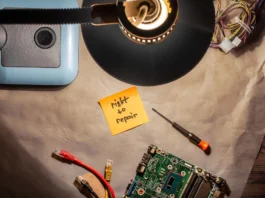One spring morning in Palo Alto, chemist Matt Kanan holds up a plain paper sack filled with gray dust. “It looks like cement mix,” he jokes, “but give it a little air and it can eat its weight in carbon.” The bag’s contents—rapid‑reacting magnesium oxide and calcium silicate—were cooked in an ordinary kiln only days before. Scatter a handful on damp soil, and the powder starts pulling carbon dioxide straight out of the breeze, then locks it away for good.
At first glance that may sound like alchemy, yet the underlying chemistry mirrors what rocks have done for eons. Nature’s trick is slow; Kanan’s team at Stanford just hit fast‑forward. Their peer‑reviewed study, published in Nature, shows that silicates turned reactive by simple heating can carbonate thousands of times faster than unprocessed stone, while using less than half the energy of today’s direct‑air‑capture machines.
Why Speed Matters
Every year, humanity pumps out roughly 37 billion tonnes of CO₂ – the main driver of global warming. Scientific panels warn that cutting emissions alone won’t be enough; we also need to remove billions of tonnes already aloft. Current capture plants work, but they are pricey and power‑hungry. A process that piggybacks on familiar equipment—cement kilns, mine furnaces, even farm lime spreaders—could slash costs and roll out quickly.
How the “Cook‑and‑Capture” Method Works
- Heat it – Common silicate ore (think olivine or serpentine tailings) is fed into a kiln at about 800 °C, far cooler than cement’s 1,400 °C. Ions trade places, turning lazy minerals into magnesium oxide and calcium silicate—the quick‑draw gunfighters of rock chemistry.
- Cool and grind – The clinker is milled into a fine, chalk‑like powder.
- Let it breathe – Spread the powder over fields, mine waste piles, or dedicated pads. In the presence of a little moisture it grabs CO₂ from air, forming solid carbonates that never leak back. That reaction is exothermic, so it needs no outside energy.
Lab tests show full carbonation in weeks under ambient air, compared with centuries for untouched rock.
From Lab Bench to Corn Field
Graduate researcher Yuxuan Chen jokes that her “recipe” may soon sit beside fertilizer in farm sheds. That is more than hype. Farmers already lime acidic soils with crushed limestone; the new mix does the liming job while storing carbon and releasing plant‑available silicon—often linked to stronger stems and bigger yields. Early greenhouse trials with Midwest corn saw a 6 % bump in biomass after one season, enough to entice several growers to volunteer for multi‑acre pilots this summer.

Costs That Make Accountants Smile
- Feedstock – Over 400 million tonnes of suitable mine tailings pile up each year, and they are often a disposal headache, so many miners will give them away.
- Energy – Kilns run 600 °C cooler than cement plants, and the Stanford team is already designing electric versions powered by wind or solar, further cutting emissions.
- Lifecycle math – After subtracting kiln fuel, each tonne of reactive powder nets about one tonne of permanent CO₂ removal. Internal estimates place production under $80 per captured tonne at commercial scale—well below most current air‑capture quotes, and in line with many carbon‑credit prices.
Scaling Without Starting From Scratch
Global cement makers already churn out four billion tonnes of clinker annually. Swap part of that throughput for reactive silicates and the industry could capture a gigatonne of CO₂ per year without building new factories. Similar retrofits are possible in lime and brick works.

Meanwhile, mining companies eye the process as a way to “clean up their mess.” Covering sulfide tailings with the carbon‑hungry dust not only sequesters CO₂ but also suppresses acid‑mine drainage by raising pH—a two‑for‑one environmental win.
Hurdles on the Road Ahead
- Supply chains – Moving millions of tonnes of powdered rock requires trucks, rail, or barges. Locating kilns close to mines and farmland will trim hauling.
- Certification – Carbon markets insist on rigorous monitoring. Researchers are testing low‑cost sensors that track carbonate formation through pH and temperature changes in the field.
- Community trust – No one wants dust storms. Pilot sites now mix the powder with compost or biochar to keep it in place until it hardens into carbonate grains. Early feedback from county regulators has been positive, but large roll‑outs will need clear safety rules and transparent data.
The Bigger Picture: Rock Stars Join Forces
Stanford’s breakthrough lines up with parallel projects worldwide—from crushed basalt trials in the UK to olivine beach sand on the Dutch coast. Each tackles the same bottleneck: accelerating rock weathering fast enough to matter. With the new heat‑activation step, even modest silicate spreads could match decades of natural weathering in a single season.
What You Can Do Today
- Ask your garden‑store manager about silicon‑rich soil amendments sourced from mine waste.
- Watch local planning notices. If a cement plant near you pilots reactive silicate production, public comments supporting the project can speed permits.
- Share the story. People trust solutions they can picture. A handful of dust that eats carbon is easy to picture.
A Final Thought
At Stanford’s lab door, the sack that looked like cement now sits half‑empty; students have scooped samples for new field trials. Kanan grins, chalk streaks on his sleeves. “We have more rock than we could ever use and all the air we need,” he says. “The rest is elbow grease.”
Could the cure for our carbon hangover really be hiding in plain rock piles? The next few harvests will tell. If those fields stay greener—and the carbon column ticks lower—we might owe our cleaner future to a simple kiln, some common stone, and a bit of early‑morning dust.





Next time you lime your lawn, do it for the climate!
Harry Potter stuff🪄
Take that CO₂!
basically Earth’s detox plan
🫶
❤️❤️❤️